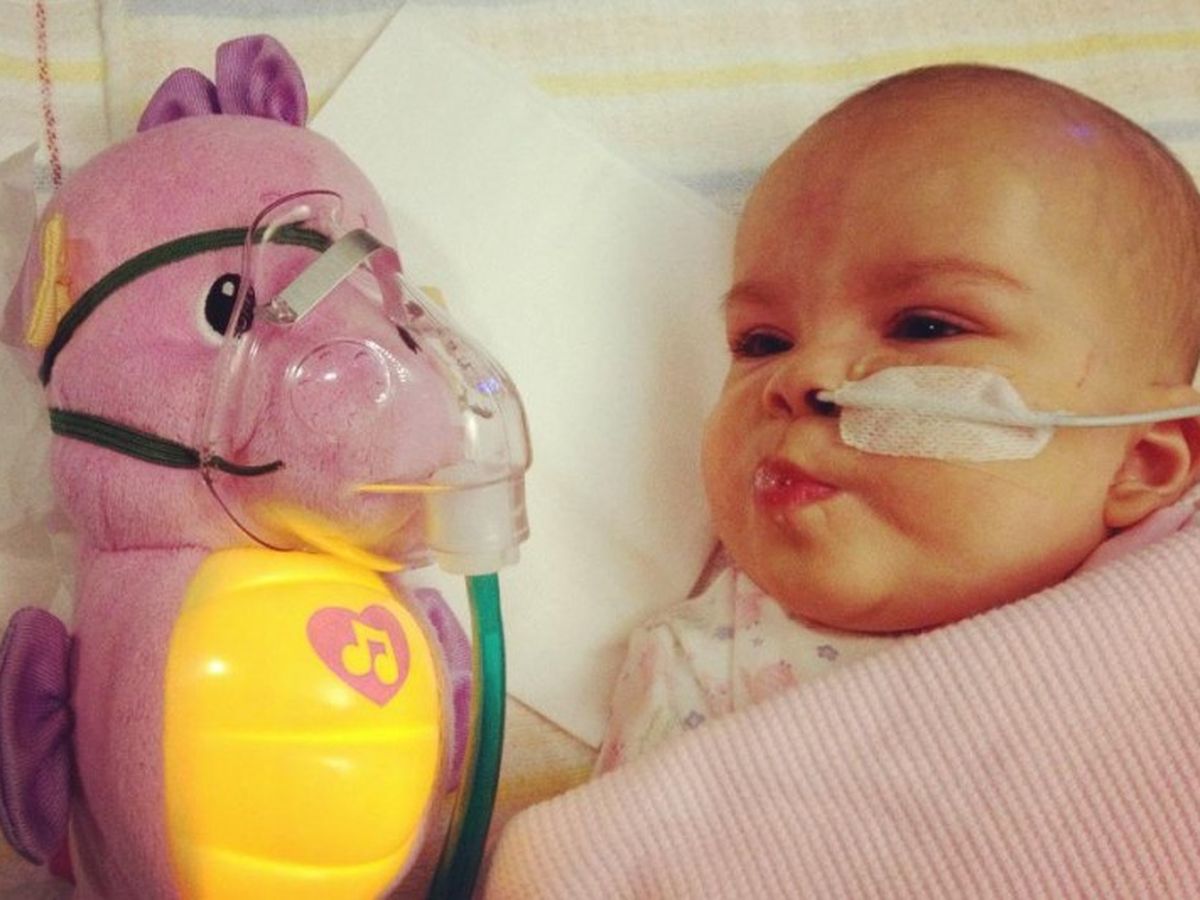We are asking Isabela’s followers to share this post to help us raise awareness for RCDP.
Seven News Report 27-09-15:
https://au.news.yahoo.com/video/watch/29649411/aussie-girl-with-rare-illness-defies-the-odds/?cmp=st#page1
New York Times Article:
http://www.nytimes.com/2015/09/07/us/flicker-of-hope-for-children-with-rare-and-devastating-disease.html?_r=0
MEET ISABELA!
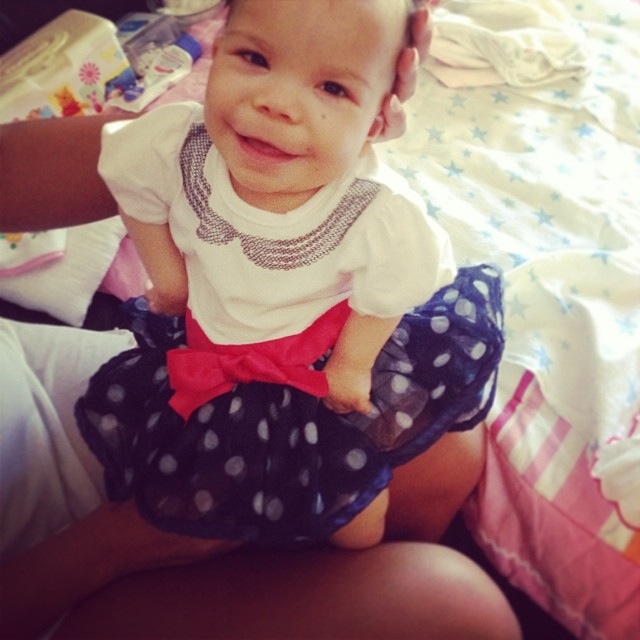
Isabela is 4 and a half years old and was born with a RARE and TERMINAL form of dwarfism called Rhizomelic Chondrodysplasia Punctata (RCDP). She is one of 54 diagnosed worldwide. Currently there is no treatment or cure and sadly, most RCDP children die before their 1st birthday.
We are desperately working hard to raise awareness for RCDP to save the life of Isabela and her 53 RCDP brothers and sisters.
The FDA has just approved a drug that they think could be a potential treatment, a POSSIBLE CURE.
But we need FUNDING - funding for the drug trial, for research, for flights to the United States where the trial will be held and for Isabela's medical insurance and treatment.
In order to get that funding, we need to make people aware of RCDP.
Please help us pray for Isabela and share her story with these hashtags #prayforisabela #bravelittleprincess #HOPEforRCDP

We are fighting hard for a RCDP cure because these children CANNOT WAIT.
Help us raise awareness for RCDP and find a cure.
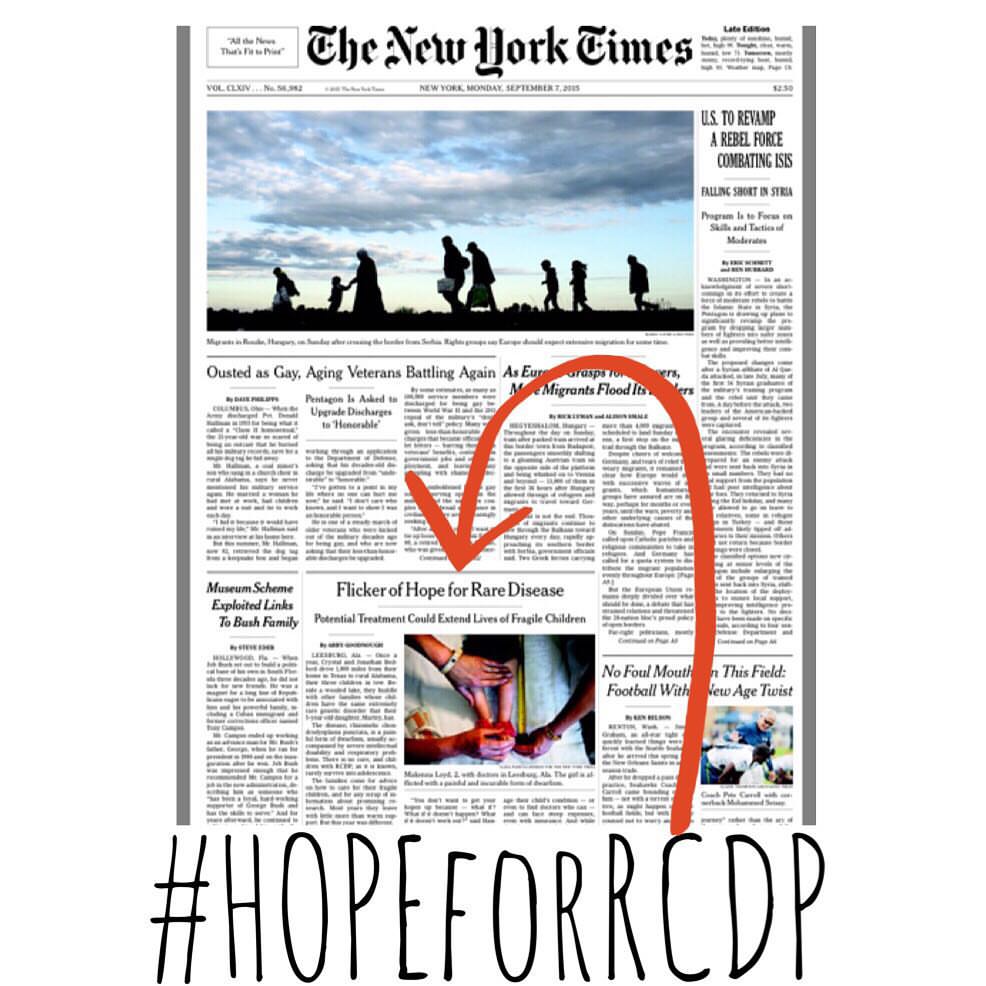
Thank you!
- Isabela’s Mama
Rhizo Kids International Website: http://www.rhizokids.com/

ISABELA'S JOURNEY
On the 15th of December 2010, I met the love of my life. I will never forget the feeling I felt when they handed me my beautiful and perfect baby girl. All the pain and worry had suddenly disappeared and in that moment, my life changed forever. My heart felt a fierce love that it had never felt before. Looking into that angelic face for the first time and hearing her beautiful cry is one of the most unforgettable moments of my life. Right there and then she had me wrapped around her little finger. But this perfect world was not to last…
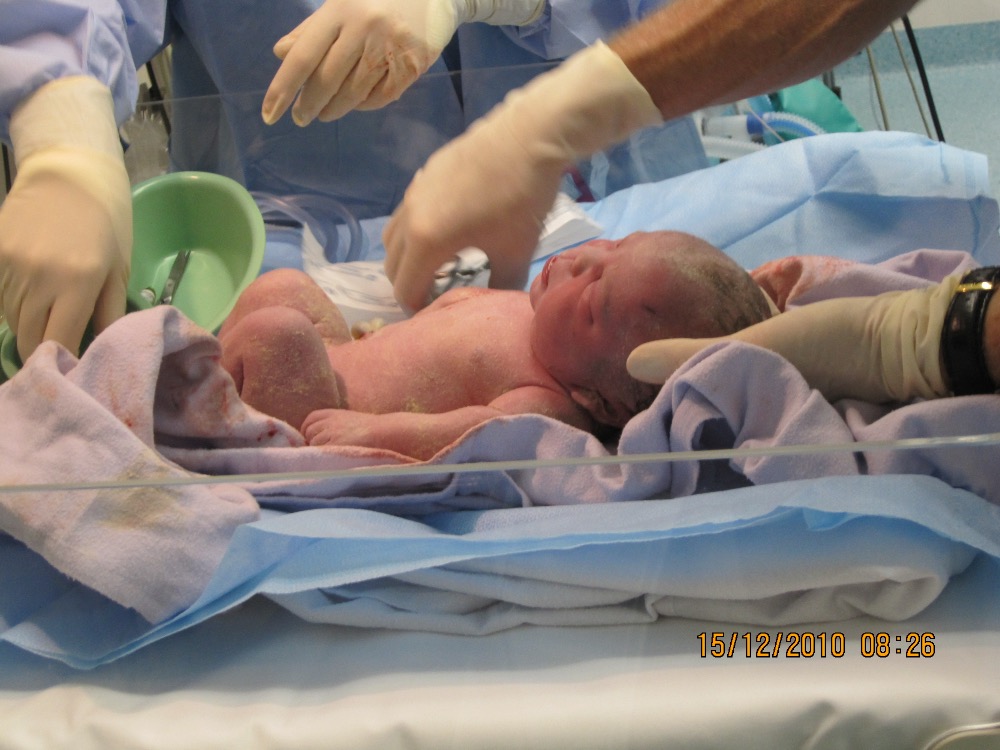
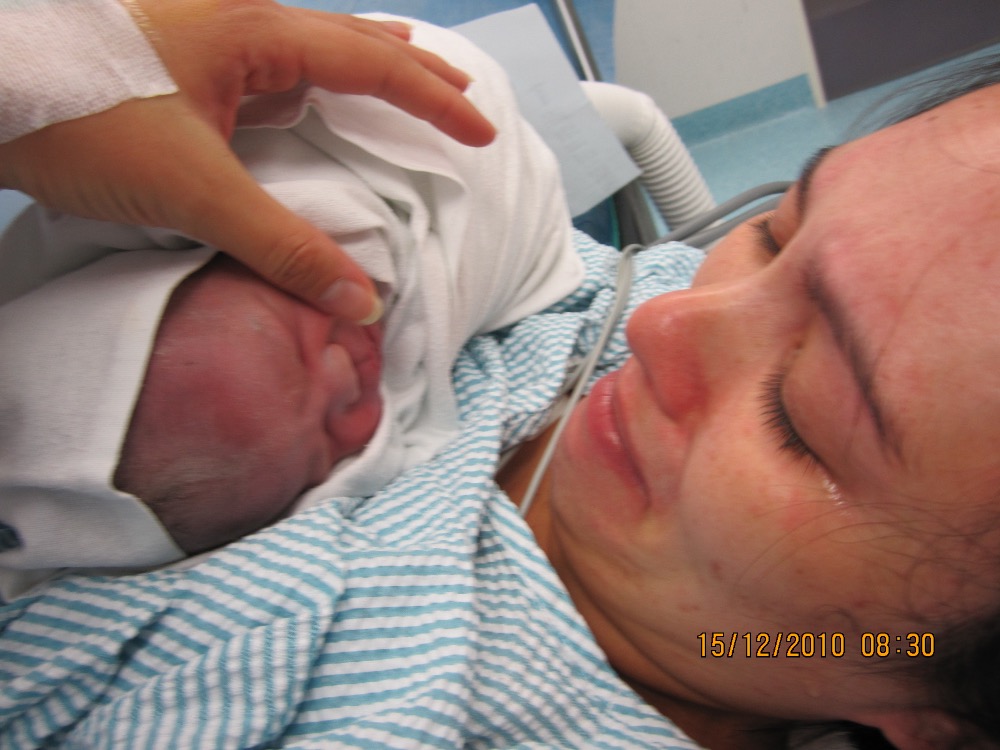
When Isabela was just 4 months old, she was diagnosed with a lethal form of skeletal dysplasia (dwarfism) called Rhizomelic Chondrodysplasia Punctata (RCDP). She had started to show signs of RCDP, namely that her upper arms and legs showed to be significantly shorter, it was discovered that she had congenital cataracts and that her joints were contracted.
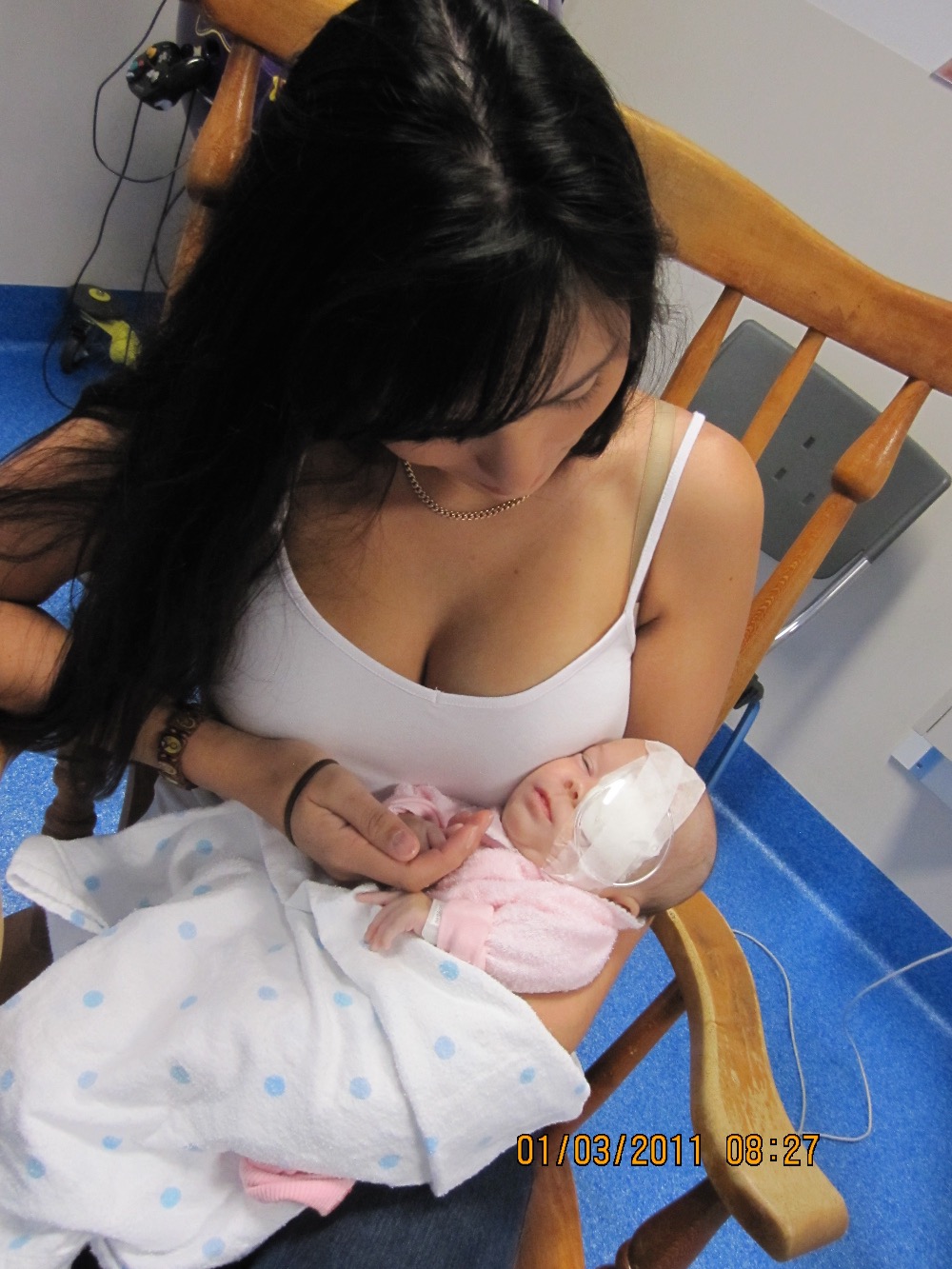
I had no idea how hard the results would be to hear. My world collapsed as doctors explained this condition and what little hope they had for my precious little baby. They recommended that I take Isabela home and make her comfortable, and suggested hospice and morphine. They told me that she would not live to see her first birthday and that I should prepare myself for the worse.
They said that with this condition came heart defects, skeletal abnormalities, cervical stenosis, neurological damage, as well as kidney and bowel problems – a condition doctors described as not being compatible with life outside the womb. The Doctor handed us an article from a medical journal that described RCDP, and at that moment, I looked at Mum and Dad and all I could see was fear and hurt. They did not let me know they were scared but their face told me everything. I closed my eyes, took a deep breath and thought to myself, I have to fight, I cannot give up on my little angel, I am her mother and I must be strong for her. I rejected hospice and morphine and I refused to give up hope.

Since that day, Isabela has faced some intense battles. Watching her pain and sometimes fear breaks my heart but seeing her bravery and strength steadies my heart again. I had no idea that something so tiny and delicate could be such a fighter! But Isabela is a FIGHTER, so fearfully and wonderfully made. I was told from day one that this journey would be long and hard. But I have never looked at Isabela and wondered how long I will have her for. I look at her and am thankful that she is ALIVE, she is breathing and fighting.
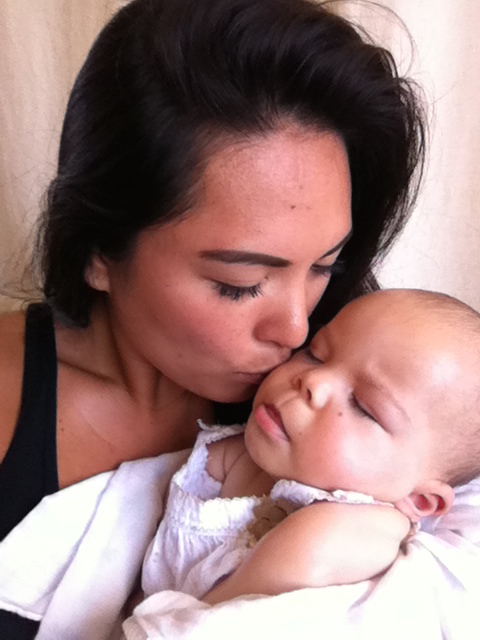
I did my own research and found the best Doctors for Isabela. My parents and I flew her to the United States when she was just 6 months old to meet the only specialist in the world on RCDP and members of the Rhizo Kids Foundation. It was the best thing I could have ever done for my little girl. They shared their expert knowledge, taught me how to look after her, what to look out for and what to expect from this condition. I became an expert on my daughter and I was determined to share my knowledge with Isabela’s medical team here in Australia.
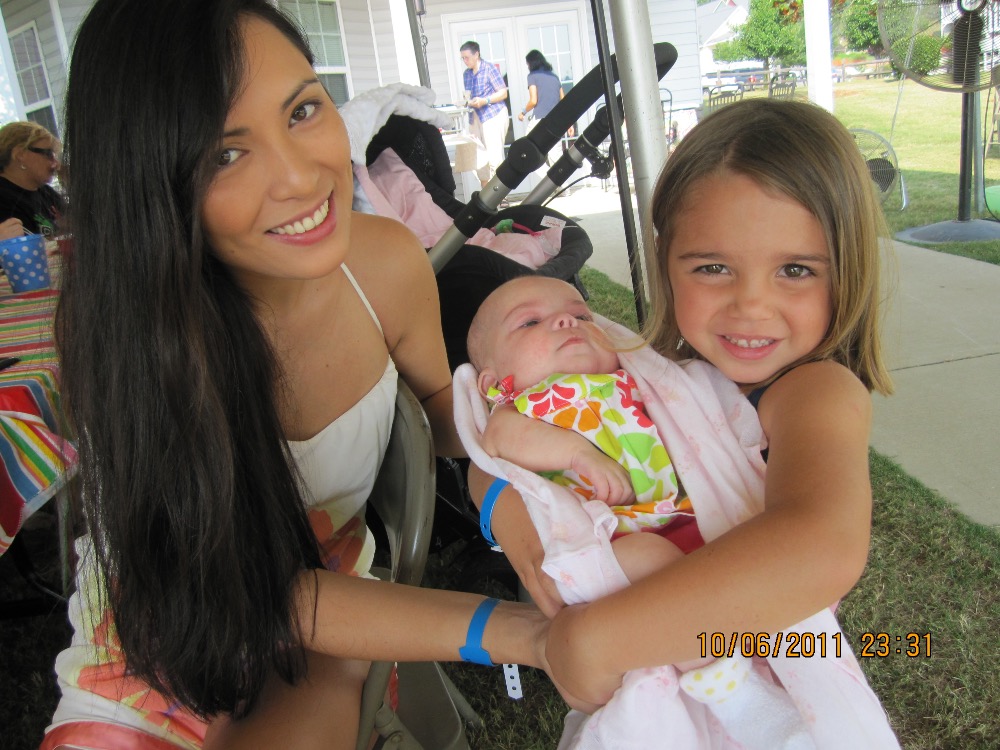
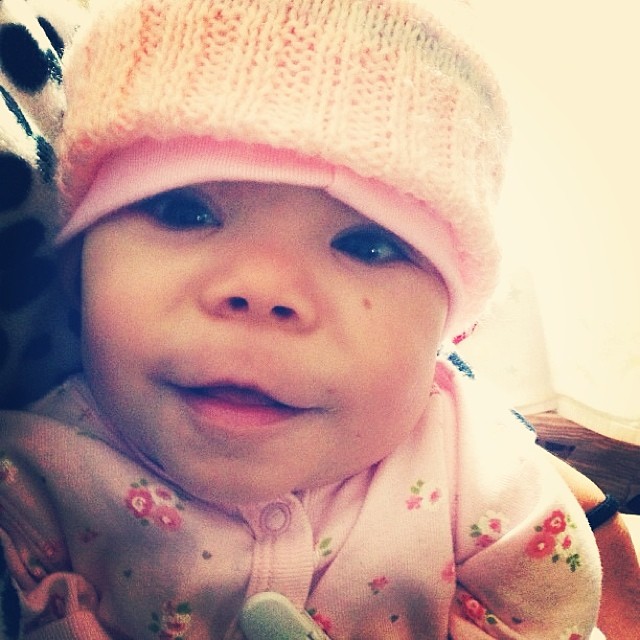
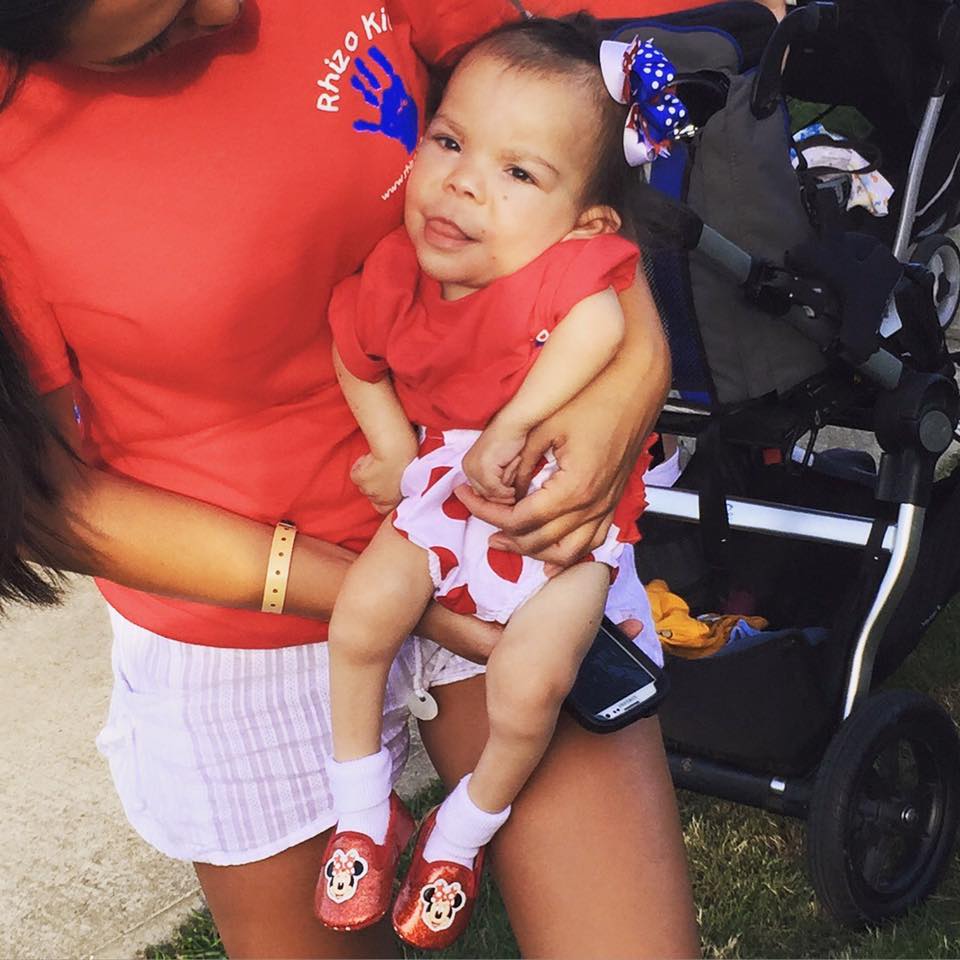
Four years on, Isabela is still beating the odds and doing the opposite of what her Doctors thought she could ever do. Yes we do face challenges everyday and Isabela has numerous obstacles to face. But I can proudly say that I have watched her fight and get through these obstacles with such strength and determination. Isabela has given me new hope and her smile has strengthened my heart. I am so thankful that I was one of the mothers who said no to the Doctors and chose to give my innocent little girl a CHANCE AT LIFE. Isabela has the best medical team working for her. She has numerous appointments and procedures. She has had over 10 surgeries in her short 4 years of life and has more in her future. She requires intense speech, occupational and physical therapy every week. I have seen her go through major spine surgery, eye operations, spinal taps, IVs, sleep studies, MRIs, x-rays, catheters, blood tests, biopsies and many other things. And through it all she never loses her smile. She is such a brave little princess and I am so proud that she has already beaten the expiration date that medical professionals tried to put on her.
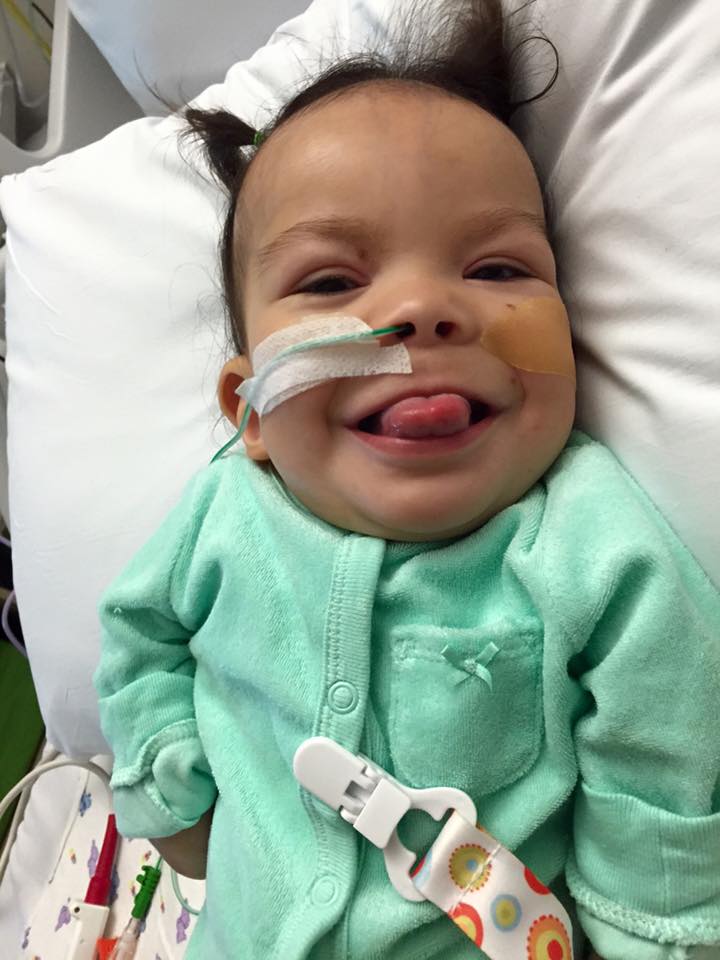
Isabela’s fine and gross motor skills are very limited, almost non-existent. She is unable to sit up, hold her head or move her arms. She may never learn to brush her own hair, hold her own bottle or crawl. BUT I get to celebrate her life daily and am so thankful to watch her grow and rejoice over every milestone. I cannot cure her condition but I have promised to always do my very best for her, to improve her quality of life and give her a sense of normality.
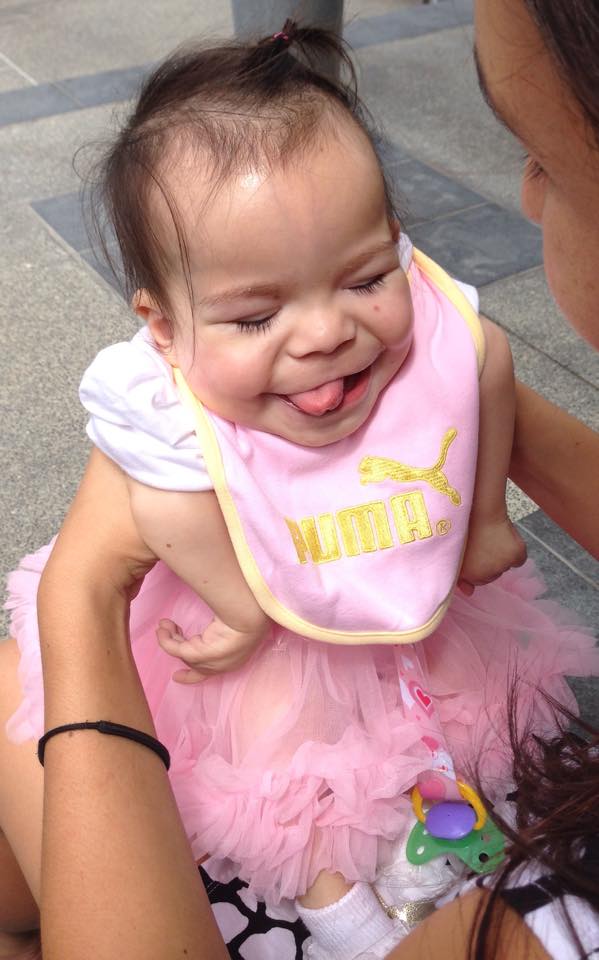
I am her movement, her dance, her song, her steps, her voice – everything and anything that she can’t be. When her favourite song is playing, I pick her up and dance to the rhythm so that she can feel the dance. When the sun is shining and the birds are singing, I take her outdoors and hold her up in the air so that she can feel the cool breeze on her face. I hold her tightly to my chest and sing so that she can feel the words forming into a song.
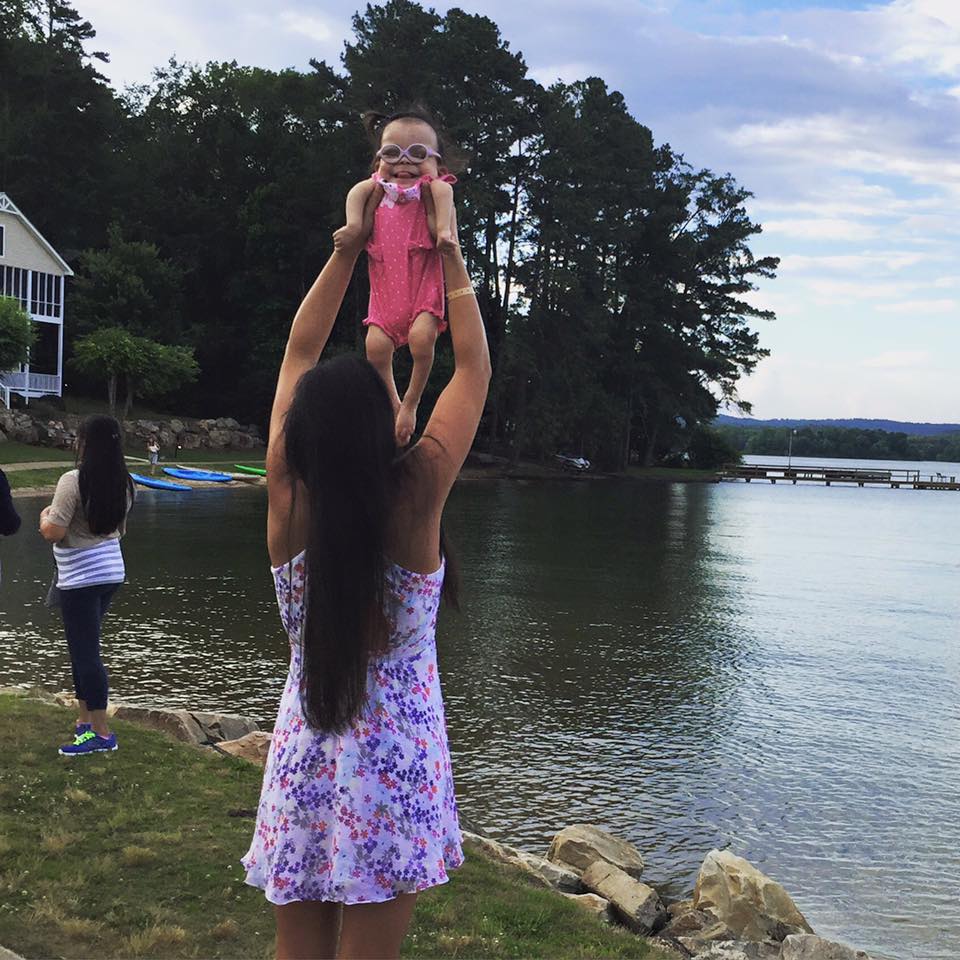
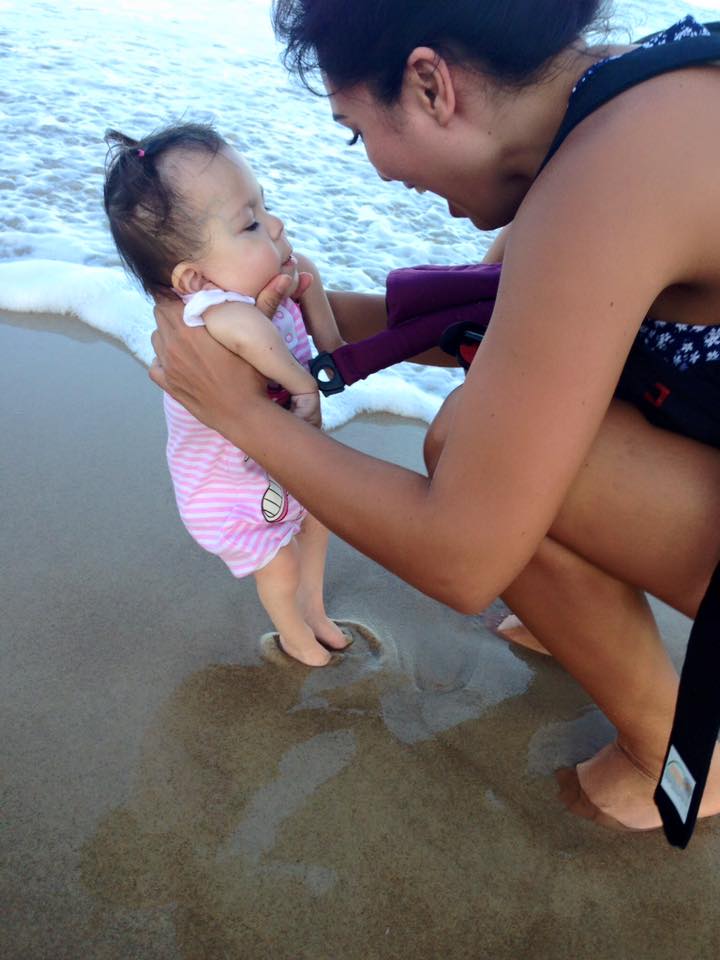
Isabela touches people’s hearts everywhere she goes. I am so honoured to be the mother of such a beautiful MIRACLE. She has taught everyone around her the significance of life. Her eyes are always so full of joy. She has the most precious smile and she laughs, giggles and talks all the time. She lights up when she sees her family and hears our voice. She adores music, she loves to cuddle and is in awe of anything that lights up. She wakes up with the biggest smile on her face and Doctors and nurses fall in love with her because even after her surgeries, she greets them with a smile. Isabela has taught me to find joy in every situation because no matter how hard this journey may be, we have each other, she is alive and I have a MIRACLE.
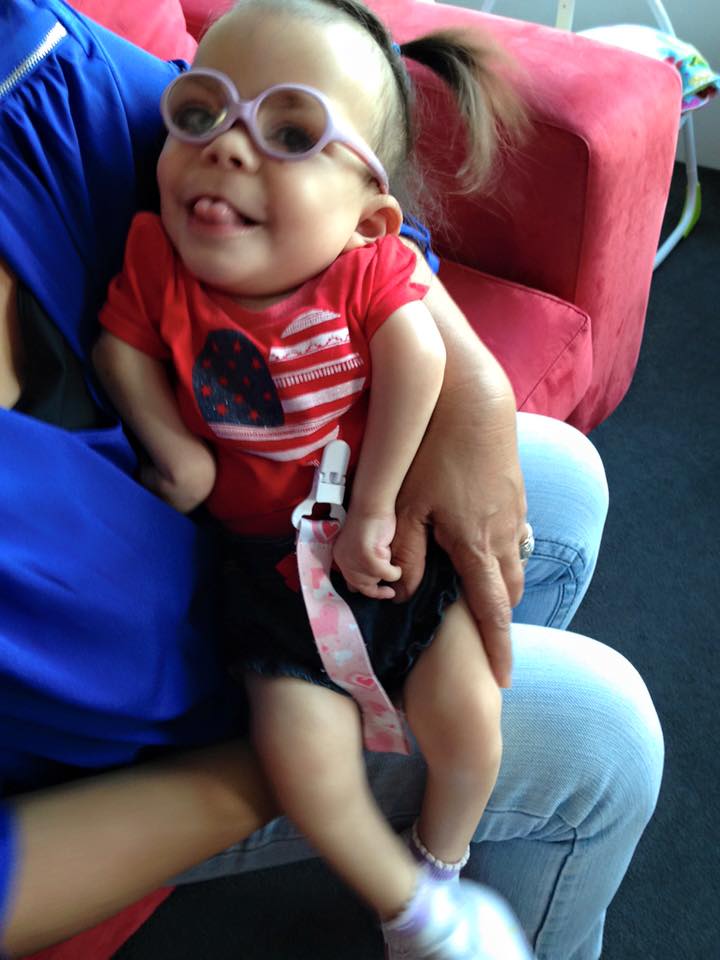
THIS POSSIBLE CURE IS OUR ONLY HOPE... our only hope that one day she will be able to hold my hand as we walk along the beach, that she will be able to run towards me and give me the biggest cuddle, that she will be able to say 'i love you mama', that she will be able to sing her favourite song as we dance, that she will be able to sit down on her own and maybe even brush her own hair and hold her own bottle...
But most of all, it is our only hope that Isabela will live for many many more years and that I will be able to see the smile that lights up my world everyday. That she will be able to live a healthier life with less hospital visits, surgeries and therapies.

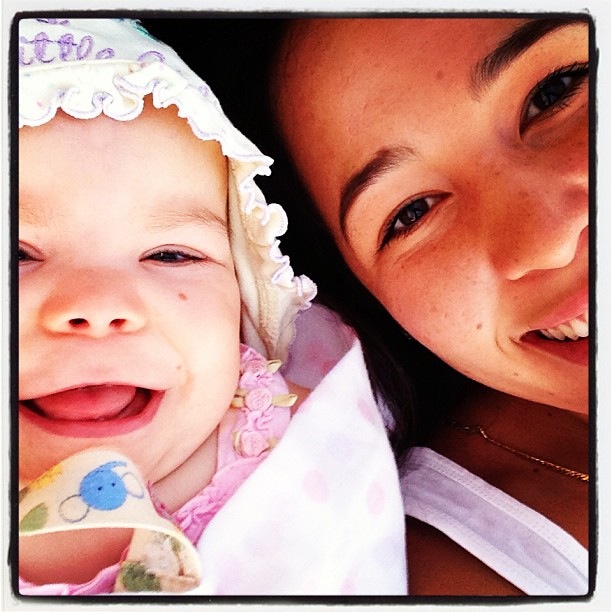
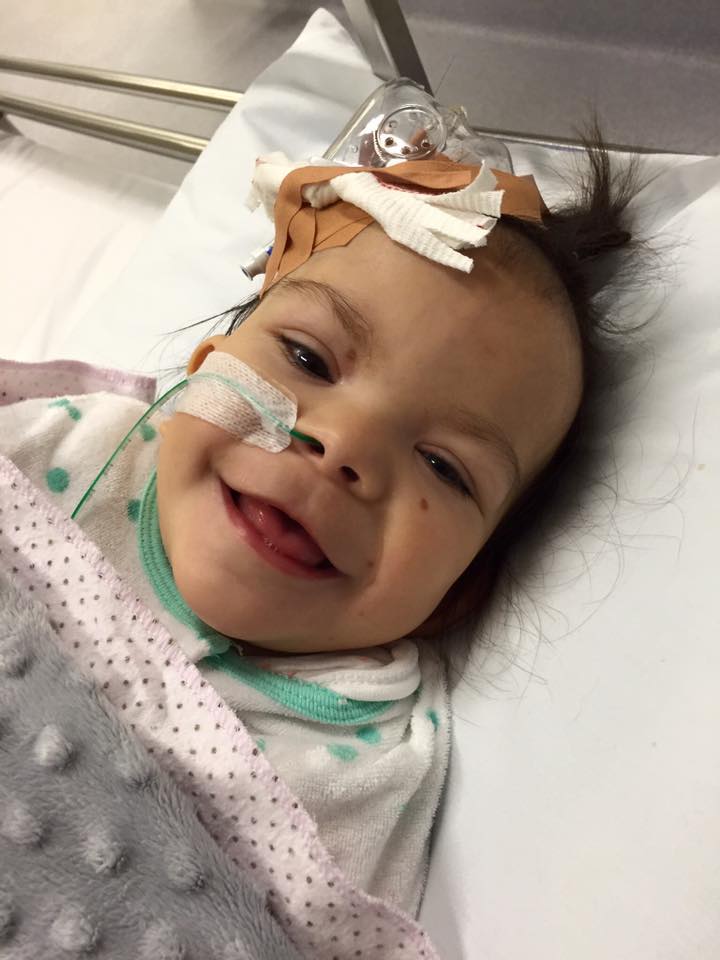

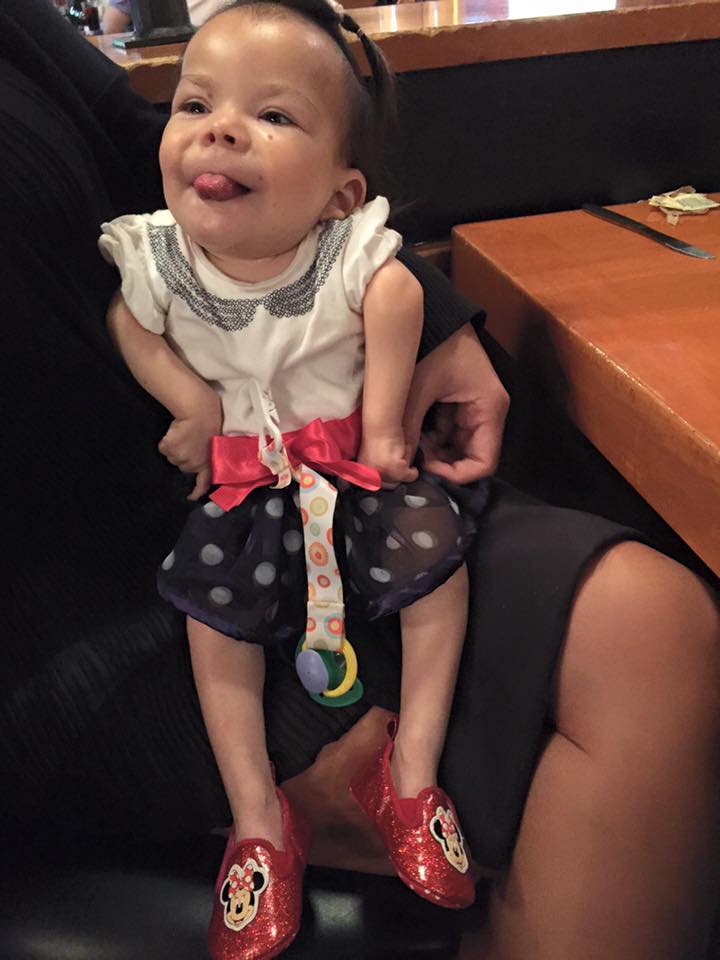
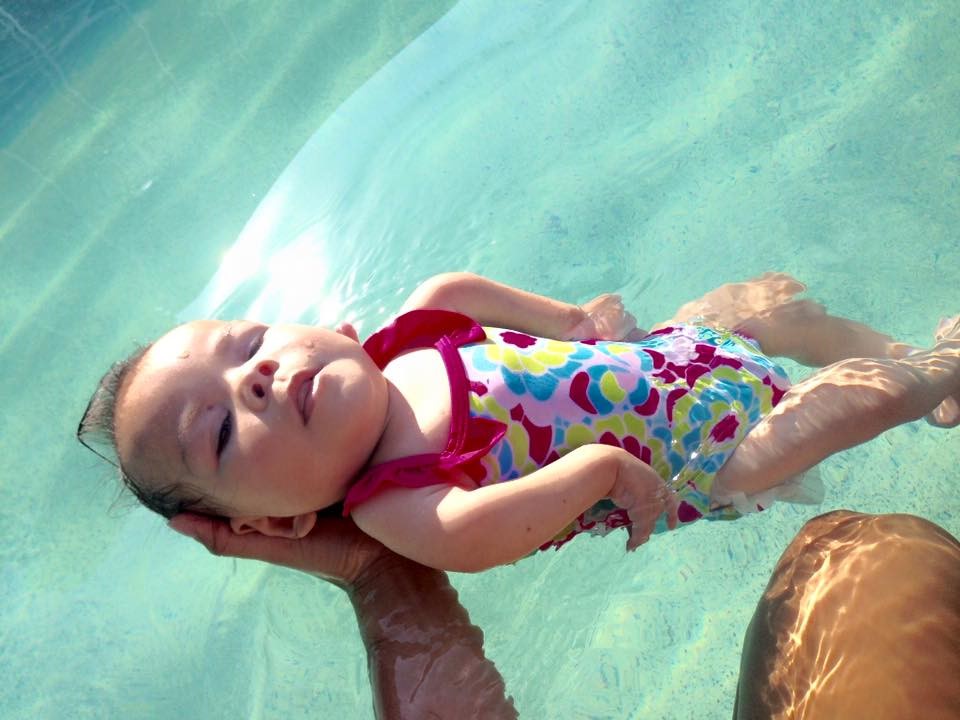
DEFINITION OF RCDP
RCDP is an autosomal recessive form of chondrodysplasia punctata characterized by defective plasmalogen biosynthesis and impaired peroxisomes. Patients have shortened limbs and severely disturbed endochondrial bone formation.
You are probably thinking.. 'okay so what does that mean'?
What is autosomal recessive?
This is a mutation or change carried on an autosome (a chromosome not involved in sex determination) that is deleterious (hurtful or destructive) only in homozygotes (nucleus, cell or organism with identical
alleles of one or more specific genes).
This basically means that both the mother and the father have to have the defective gene in order for their baby to be born with RCDP. That means it is not anyone’s fault that their baby has RCDP. You could not have done anything to cause this or anything to prevent this. This gene has been in many previous generations in your family.
What does Rhizomelic mean?
Rhizomelic is the proximal shortening at the end of the bone closest to the trunk.That means the humerus and femur are shorter than they are supposed to be.
What is chondrodysplasia punctata?
A heterogeneous group of hereditary bone dysplasias, the common characteristic of which is stippling (spotty calcium deposits) of the epiphyses (the end of a long bone that grows) in infancy.
This means that on an x‐ray the infants bones will look spotted at the ends.
What is a plasmalogen?
A plasmalogen is an ether lipid with an ether‐linked alkene (double bond next to the link) also known as a vinyl ether at the first carbon position of the glycerol. The second carbon has a typical ester‐linked
fatty acid and the third carbon usually has a phospholipid head group like choline or ethanolamine.
I am sorry about this definition. It is very complicated I know. The most important thing for you to understand is that children with RCDP have low levels of plasmalogens.
The child’s plasmalogen level is how the doctors determine the prognosis for the children. The higher their plasmalogen level the less affected the child will be. The lower their plasmalogen level the more affected the child will be.
RCDP kids are categorized into three categories based on their plasmalogen levels. Mild, Intermediate and Severe. It’s important to remember that their severity has nothing to do with the type of RCDP that they have but rather how high or low their plasmalogen levels are.
What is biosynthesis?
Biosynthesis is the building up of a chemical compound in the physiologic processes of a living organism.
What are peroxisomes?
A peroxisome is a cell organelle containing enzymes such as catalose and oxidase, that catalyze the production and breakdown of hydrogen peroxide.
I think this is the start of your understanding of Rhizomelic Chondrodysplasia Punctata. You probably
feel like you have just earned a doctorate. I sure do!!!
Characteristics Of RCDP
• Shortening of the humerus and femur
• Coronal clefts of the vertebral bodies
• Cataracts
• Lower than normal birth weight, length and head circumference
• A growth deficiency
• Mental deficiency
• Seizures
• Calcium deposits at the joints
• Stiff painful joints
• Recurrent respiratory tract infections
• Aspiration
• Some children with RCDP have heart complications
• Some children with RCDP also have hearing loss
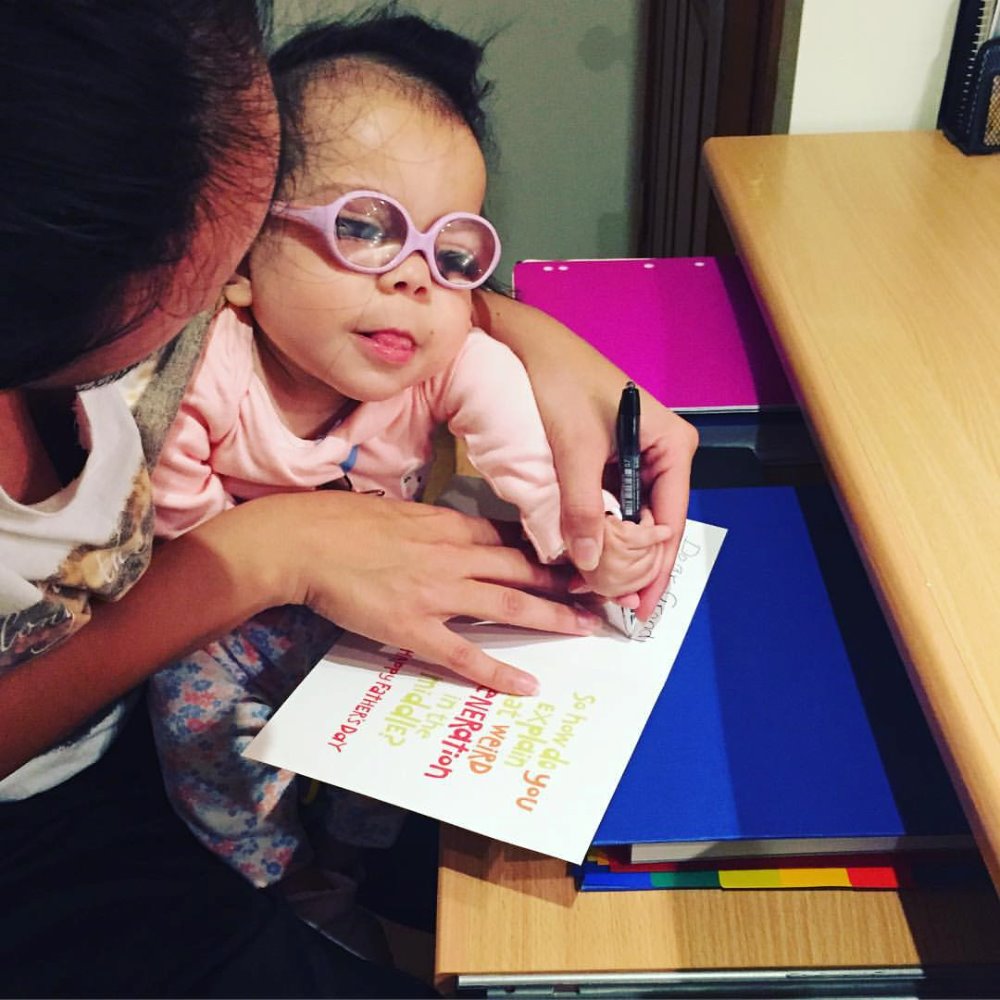
Seven News Report 27-09-15:
https://au.news.yahoo.com/video/watch/29649411/aussie-girl-with-rare-illness-defies-the-odds/?cmp=st#page1
New York Times Article:
http://www.nytimes.com/2015/09/07/us/flicker-of-hope-for-children-with-rare-and-devastating-disease.html?_r=0
MEET ISABELA!

Isabela is 4 and a half years old and was born with a RARE and TERMINAL form of dwarfism called Rhizomelic Chondrodysplasia Punctata (RCDP). She is one of 54 diagnosed worldwide. Currently there is no treatment or cure and sadly, most RCDP children die before their 1st birthday.
We are desperately working hard to raise awareness for RCDP to save the life of Isabela and her 53 RCDP brothers and sisters.
The FDA has just approved a drug that they think could be a potential treatment, a POSSIBLE CURE.
But we need FUNDING - funding for the drug trial, for research, for flights to the United States where the trial will be held and for Isabela's medical insurance and treatment.
In order to get that funding, we need to make people aware of RCDP.
Please help us pray for Isabela and share her story with these hashtags #prayforisabela #bravelittleprincess #HOPEforRCDP

We are fighting hard for a RCDP cure because these children CANNOT WAIT.
Help us raise awareness for RCDP and find a cure.

Thank you!
- Isabela’s Mama
Rhizo Kids International Website: http://www.rhizokids.com/

ISABELA'S JOURNEY
On the 15th of December 2010, I met the love of my life. I will never forget the feeling I felt when they handed me my beautiful and perfect baby girl. All the pain and worry had suddenly disappeared and in that moment, my life changed forever. My heart felt a fierce love that it had never felt before. Looking into that angelic face for the first time and hearing her beautiful cry is one of the most unforgettable moments of my life. Right there and then she had me wrapped around her little finger. But this perfect world was not to last…


When Isabela was just 4 months old, she was diagnosed with a lethal form of skeletal dysplasia (dwarfism) called Rhizomelic Chondrodysplasia Punctata (RCDP). She had started to show signs of RCDP, namely that her upper arms and legs showed to be significantly shorter, it was discovered that she had congenital cataracts and that her joints were contracted.

I had no idea how hard the results would be to hear. My world collapsed as doctors explained this condition and what little hope they had for my precious little baby. They recommended that I take Isabela home and make her comfortable, and suggested hospice and morphine. They told me that she would not live to see her first birthday and that I should prepare myself for the worse.
They said that with this condition came heart defects, skeletal abnormalities, cervical stenosis, neurological damage, as well as kidney and bowel problems – a condition doctors described as not being compatible with life outside the womb. The Doctor handed us an article from a medical journal that described RCDP, and at that moment, I looked at Mum and Dad and all I could see was fear and hurt. They did not let me know they were scared but their face told me everything. I closed my eyes, took a deep breath and thought to myself, I have to fight, I cannot give up on my little angel, I am her mother and I must be strong for her. I rejected hospice and morphine and I refused to give up hope.

Since that day, Isabela has faced some intense battles. Watching her pain and sometimes fear breaks my heart but seeing her bravery and strength steadies my heart again. I had no idea that something so tiny and delicate could be such a fighter! But Isabela is a FIGHTER, so fearfully and wonderfully made. I was told from day one that this journey would be long and hard. But I have never looked at Isabela and wondered how long I will have her for. I look at her and am thankful that she is ALIVE, she is breathing and fighting.

I did my own research and found the best Doctors for Isabela. My parents and I flew her to the United States when she was just 6 months old to meet the only specialist in the world on RCDP and members of the Rhizo Kids Foundation. It was the best thing I could have ever done for my little girl. They shared their expert knowledge, taught me how to look after her, what to look out for and what to expect from this condition. I became an expert on my daughter and I was determined to share my knowledge with Isabela’s medical team here in Australia.



Four years on, Isabela is still beating the odds and doing the opposite of what her Doctors thought she could ever do. Yes we do face challenges everyday and Isabela has numerous obstacles to face. But I can proudly say that I have watched her fight and get through these obstacles with such strength and determination. Isabela has given me new hope and her smile has strengthened my heart. I am so thankful that I was one of the mothers who said no to the Doctors and chose to give my innocent little girl a CHANCE AT LIFE. Isabela has the best medical team working for her. She has numerous appointments and procedures. She has had over 10 surgeries in her short 4 years of life and has more in her future. She requires intense speech, occupational and physical therapy every week. I have seen her go through major spine surgery, eye operations, spinal taps, IVs, sleep studies, MRIs, x-rays, catheters, blood tests, biopsies and many other things. And through it all she never loses her smile. She is such a brave little princess and I am so proud that she has already beaten the expiration date that medical professionals tried to put on her.

Isabela’s fine and gross motor skills are very limited, almost non-existent. She is unable to sit up, hold her head or move her arms. She may never learn to brush her own hair, hold her own bottle or crawl. BUT I get to celebrate her life daily and am so thankful to watch her grow and rejoice over every milestone. I cannot cure her condition but I have promised to always do my very best for her, to improve her quality of life and give her a sense of normality.

I am her movement, her dance, her song, her steps, her voice – everything and anything that she can’t be. When her favourite song is playing, I pick her up and dance to the rhythm so that she can feel the dance. When the sun is shining and the birds are singing, I take her outdoors and hold her up in the air so that she can feel the cool breeze on her face. I hold her tightly to my chest and sing so that she can feel the words forming into a song.


Isabela touches people’s hearts everywhere she goes. I am so honoured to be the mother of such a beautiful MIRACLE. She has taught everyone around her the significance of life. Her eyes are always so full of joy. She has the most precious smile and she laughs, giggles and talks all the time. She lights up when she sees her family and hears our voice. She adores music, she loves to cuddle and is in awe of anything that lights up. She wakes up with the biggest smile on her face and Doctors and nurses fall in love with her because even after her surgeries, she greets them with a smile. Isabela has taught me to find joy in every situation because no matter how hard this journey may be, we have each other, she is alive and I have a MIRACLE.

THIS POSSIBLE CURE IS OUR ONLY HOPE... our only hope that one day she will be able to hold my hand as we walk along the beach, that she will be able to run towards me and give me the biggest cuddle, that she will be able to say 'i love you mama', that she will be able to sing her favourite song as we dance, that she will be able to sit down on her own and maybe even brush her own hair and hold her own bottle...
But most of all, it is our only hope that Isabela will live for many many more years and that I will be able to see the smile that lights up my world everyday. That she will be able to live a healthier life with less hospital visits, surgeries and therapies.






DEFINITION OF RCDP
RCDP is an autosomal recessive form of chondrodysplasia punctata characterized by defective plasmalogen biosynthesis and impaired peroxisomes. Patients have shortened limbs and severely disturbed endochondrial bone formation.
You are probably thinking.. 'okay so what does that mean'?
What is autosomal recessive?
This is a mutation or change carried on an autosome (a chromosome not involved in sex determination) that is deleterious (hurtful or destructive) only in homozygotes (nucleus, cell or organism with identical
alleles of one or more specific genes).
This basically means that both the mother and the father have to have the defective gene in order for their baby to be born with RCDP. That means it is not anyone’s fault that their baby has RCDP. You could not have done anything to cause this or anything to prevent this. This gene has been in many previous generations in your family.
What does Rhizomelic mean?
Rhizomelic is the proximal shortening at the end of the bone closest to the trunk.That means the humerus and femur are shorter than they are supposed to be.
What is chondrodysplasia punctata?
A heterogeneous group of hereditary bone dysplasias, the common characteristic of which is stippling (spotty calcium deposits) of the epiphyses (the end of a long bone that grows) in infancy.
This means that on an x‐ray the infants bones will look spotted at the ends.
What is a plasmalogen?
A plasmalogen is an ether lipid with an ether‐linked alkene (double bond next to the link) also known as a vinyl ether at the first carbon position of the glycerol. The second carbon has a typical ester‐linked
fatty acid and the third carbon usually has a phospholipid head group like choline or ethanolamine.
I am sorry about this definition. It is very complicated I know. The most important thing for you to understand is that children with RCDP have low levels of plasmalogens.
The child’s plasmalogen level is how the doctors determine the prognosis for the children. The higher their plasmalogen level the less affected the child will be. The lower their plasmalogen level the more affected the child will be.
RCDP kids are categorized into three categories based on their plasmalogen levels. Mild, Intermediate and Severe. It’s important to remember that their severity has nothing to do with the type of RCDP that they have but rather how high or low their plasmalogen levels are.
What is biosynthesis?
Biosynthesis is the building up of a chemical compound in the physiologic processes of a living organism.
What are peroxisomes?
A peroxisome is a cell organelle containing enzymes such as catalose and oxidase, that catalyze the production and breakdown of hydrogen peroxide.
I think this is the start of your understanding of Rhizomelic Chondrodysplasia Punctata. You probably
feel like you have just earned a doctorate. I sure do!!!
Characteristics Of RCDP
• Shortening of the humerus and femur
• Coronal clefts of the vertebral bodies
• Cataracts
• Lower than normal birth weight, length and head circumference
• A growth deficiency
• Mental deficiency
• Seizures
• Calcium deposits at the joints
• Stiff painful joints
• Recurrent respiratory tract infections
• Aspiration
• Some children with RCDP have heart complications
• Some children with RCDP also have hearing loss

